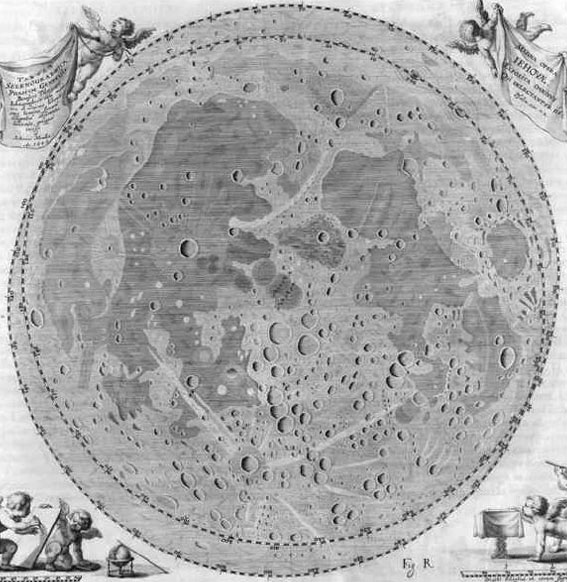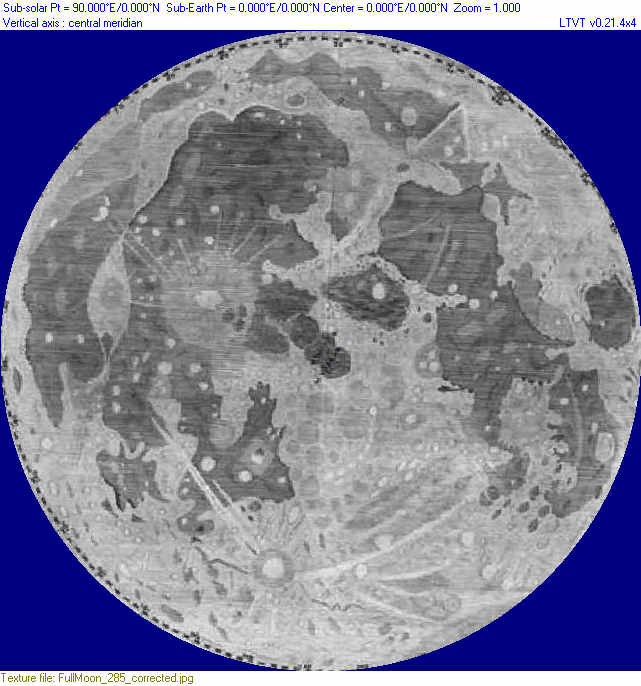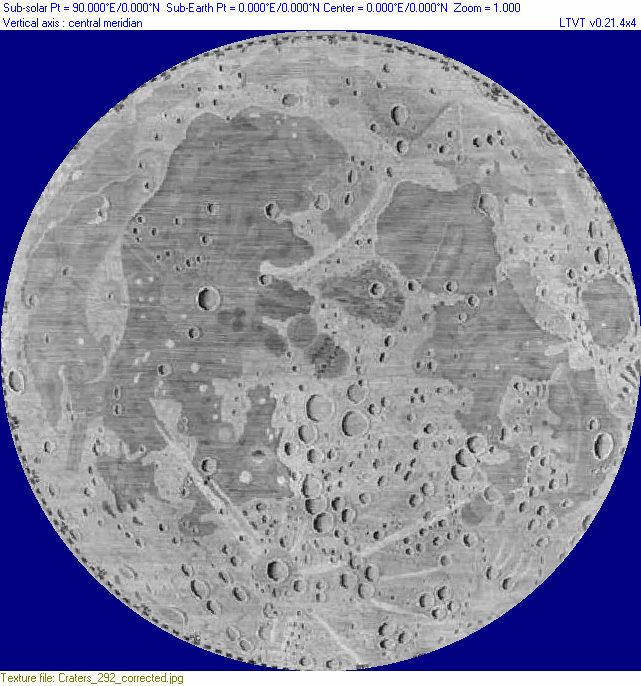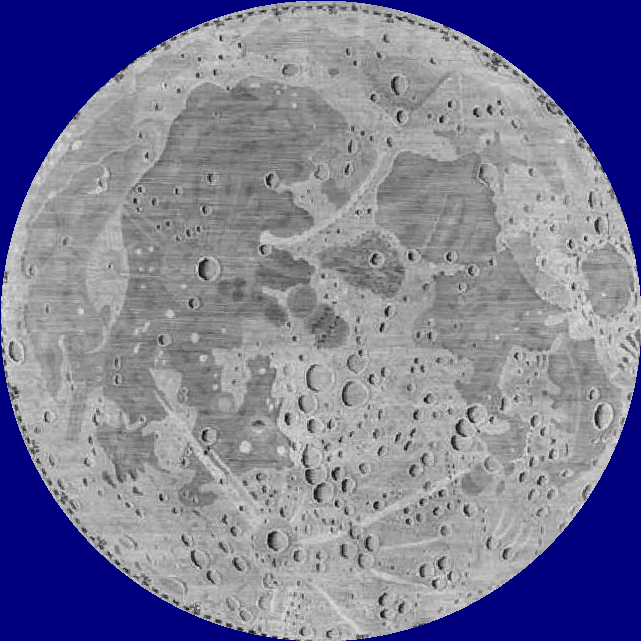Johannes Hevelius
Contents
Johannes Hevelius
(extended biography)Table of Contents
[#Johannes Hevelius Johannes Hevelius]
[#Johannes Hevelius-Career Career]
[#Johannes Hevelius-Lunar Contributions Lunar Contributions]
[#Johannes Hevelius-Publications Publications]
[#Johannes Hevelius-References References]
[#Johannes Hevelius-References-Biographical Resources Biographical Resources]
[#Johannes Hevelius-References-Web Links Web Links]
The lunar crater [/Hevelius Hevelius] is named after Johannes Hevelius (January 28, 1611 – January 28, 1687), a wealthy Polish brewer and astronomer. Hevelius was the personally preferred Latinized spelling of the family name Höwelcke, also seen as Hevel, Heweliuza, and many variants.
Career
Hevelius was the well-educated second child of the owners of a successful Danzig (Gdansk) brewery, which he took over (with the assistance of his two wealthy wives), as well as serving as a town councilor. An early interest in astronomy was revived in 1639, and he built a roof-top observatory which he christened "Stellaburgum". From there he made many observations with self-built telescopes, as well as making positional measurements using the non-telescopic methods of [/Tycho Tycho Brahe]. In addition to his lunar work, a star catalog and highly regarded celestial atlas (naming several new constellations) were posthumously seen through publication by his young second wife.
Lunar Contributions
Hevelius' approximately four years of careful lunar observations culminated in the self-publication of his massive Selenographia sive lunae descriptio (1647), the first comprehensive lunar atlas, as well as a compendium of the practical astronomical knowledge of the day, from telescope building to his own sunspot and planetary observations. In Selenographia Hevelius introduced a system of lunar nomenclature based on imagined analogies with geologic features on Earth. This system was reportedly preferred by English observers until about 1800, when publication of the two volumes of [/Johann%20Schr%C3%B6ter Johann Schröter]'s lunar observations established the continental system (used there) of using names from the competing system of [/Riccioli Riccioli] interspersed with a very few of those from Hevelius (primarily for mountain ranges). After 1647, Hevelius' interests seem to have been concentrated on comets and stellar astronomy.
Publications
Hevelii, Johannis. 1647. Selenographia sive lunae descriptio. Gedansk. Autoris sumtibus, typis Hünefeldianis.
- Hi-resolution (zoomable) scans of this important work are available from the ETH-Bibliothek (Switzerland)
- Another copy is available in the IMSS Digital Library
- High resolution scans of selected pages are also available from the University of Oklahoma.
- Among the contents are:
- Phase diagram (p. 182). Hevelius divides the lunation into 36 stages, assigning a name to each. These names serve as the titles to the chapters of his observing guide (pages 273 and following), each illustrated by a careful map of the Moon with similar lighting.
- Unlabeled map of Full Moon (p. 279) and larger version (p. 284)
- The three two-page full disk maps (Full Moon/high illumination, Nomenclature and Craters/low illumination) presumably represent a composite of Hevelius' many individual observations listed in later tables, characteristic examples of which are illustrated in his observing guide.
- Without reading the Latin text, it is unclear what the dotted libration circles are meant to represent. It appears Hevelius, and [/Riccioli Riccioli] after him, may have thought there were two nodes at which limb positions were not altered by libration.
- Nomenclature map (p. 291)
- Note: for this map Hevelius has adopted a graphic style -- apparently inspired by early terrestrial cartographers -- of representing topography with imaginary "mountains" so fanciful that it is almost impossible to guess on the basis of this map, alone, what observable features are being named. For example, features that Hevelius understood to be craters are represented as stylized rings of peaks. Nonetheless their intended namesakes can often be identified by comparison with his more realistic Full Moon (high illumination) and Crater (low illumination) maps. Further clues can undoubtedly be found in the observing guide to the individual phases.
- Nomenclature list (with explanations, pp. 294+)
- The main purpose of this list is to identify the terrestrial objects that serve as the basis of Hevelius' Latin names, rather than to clarify exactly which lunar objects they refer to. According to [/Whitaker Whitaker] (p. 208) the list includes 17 names that are not printed on the nomenclature map.
- Many later authors of attempted to establish the correspondence between the names assigned by Hevelius and those assigned to the same feature by [/Riccioli Riccioli]. Among these are:
- [/Hell Hell] (page 222 ff)
- [/Tobias%20Mayer Tobias Mayer] (as edited by [/Lichtenberg Lichtenberg] and republished by [/Johann%20Schr%C3%B6ter Johann Schröter] (Plate TV).
- [/Beer%20and%20M%C3%A4dler Beer and Mädler] (page 29ff)
- [/Whitaker Whitaker] (Appendix E, p. 201)
- Crater map (p. 330)
- Here are some possibly helpful comparisons (click to view ~1 MB GIF animations)
- Hevelius' three two-page maps compared:

- High illumination map compared to modern Full Moon image by New Zealand amateur Mike White (with additional processing by Maurice Collins) that appeared in the August 2009 issue of [/ALPO The Lunar Observer]:

- Low illumination (crater) map compared to lunar topography as rendered by Michael Zeiler of the mapping company ESRI, using Kaguya digital height data:

- Low illumination (crater) map compared to composite of the newer LOLA-based topography combined with the Mike White image used as an albedo map (rendered with LTVT)

- In the last three examples, [/LTVT LTVT] has been used to reduce the modern observations to zero [/librations libration] and register them to the Hevelius maps. The western half of the Moon matches the expected view rather closely, with such major features as [/Plato Plato], [/Sinus%20Iridum Sinus Iridum], [/Aristarchus Aristarchus], [/Copernicus Copernicus], [/Bullialdus Bullialdus] and [/Tycho Tycho] being remarkably close to their expected positions. The eastern half of the Moon appears to have been recorded with quite a different rotation and libration. Also note that although many craters are to be taken as renderings of observed objects, sets of crater symbols are used in places simply as means of indicating texture. For example, [/Rupes%20Altai Rupes Altai] appears to be represented as a non-existent row of small craters. Likewise, the modern [/Montes%20Carpatus Montes Carpatus] (above [/Copernicus Copernicus]) is represented by a row of small craters whose individual identities are probably meaningless.
- Hevelius' three two-page maps compared:
- Unlabeled map of Full Moon (p. 279) and larger version (p. 284)
- First Phase map (thin waxing crescent, 1644 Apr 08 8 pm -- additional phases, with observational notes and descriptions, follow through full lunation)
- Modern technology and data have made it possible to recreate with considerable accuracy what the Moon would have looked like on any historic date. Since Hevelius carefully records the date and time (using the modern system with days running from local solar midnight to local midnight in Danzig and reckoning times as "am" or "pm"), we know quite exactly what the Moon looked like at the time of his observations.
- Like all drawings made at the eyepiece, Hevelius' choice of detail to draw, and his manner of drawing it, is selective and variable. Some areas seem to be carefully rendered, others may have been intended to give nothing more than a sense of texture. It also looks like Hevelius may have used earlier observations as a kind of template to which a given night's observations were added.
- In this first of Hevelius' illustrations (the thin waxing crescent), the modern [/La%20P%C3%A9rouse La Pérouse] can be easily identified as the isolated, strongly drawn crater symbol in the southern part of the crescent. In the northern part [/Gauss Gauss] seems to be lightly drawn as a large ellipse with [/Hahn Hahn] and a couple of other crater symbols perhaps meant to indicate the local texture shown between it and the terminator. [/Plutarch Plutarch] can be recognized to the south of these. Despite the care with which it seems to be drawn, the contour of the terminator does not everywhere follow its expected shape. The markings in his final phase drawings (the thin waning crescent) -- which were actually created earlier, in 1643 -- are significantly harder to understand.
- Given the uncertainties in what the symbols represent at the observational level, locating how and where a feature recorded on a particular date appears in the full disk composites can be challenging.
- [/Johann%20Schr%C3%B6ter Johann Schröter]'s interpretation of four of Hevelius' phase drawings can be found in Plate T. IV (Figs. 1-4; scan courtesy Nigel Longshaw) of the former's own book.
- First Phase map (thin waxing crescent, 1644 Apr 08 8 pm -- additional phases, with observational notes and descriptions, follow through full lunation)
- Diagrams of varying orientation in sky
- Full Moon diagram
- Final phase (thin waning crescent)
- Full Moon skeleton map (2nd version -- also repeated at end before index
- Lists, by month, of observations made (only a few of which are illustrated in the preceding chapters), each list accompanied by a schematic diagram of the terminator positions observed on a skeleton map of the Full Moon (pages 415ff)
- Eclipse diagram (1647 Jan 20, others follow)
- [/Beer%20and%20M%C3%A4dler Beer and Mädler], in the introduction to their comparative nomenclature list (p. 29, Sec. 36), mention a letter from Hevelius to [/Riccioli Riccioli] reproduced as an appendix in the Selenographia.
References
Biographical Resources
- Habashi, Fathi. 2007 "Hevel, Johannes" in Thomas Hockey, ed., Biographical Encyclopedia of Astronomers, Vol. 1, pp. 501-503.
Web Links
- Hevelius at IMSS
This page has been edited 1 times. The last modification was made by - tychocrater tychocrater on Jun 13, 2009 3:24 pm - mbx1